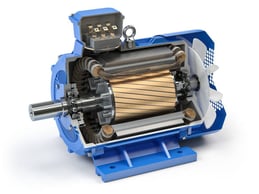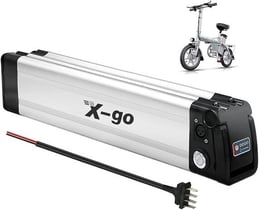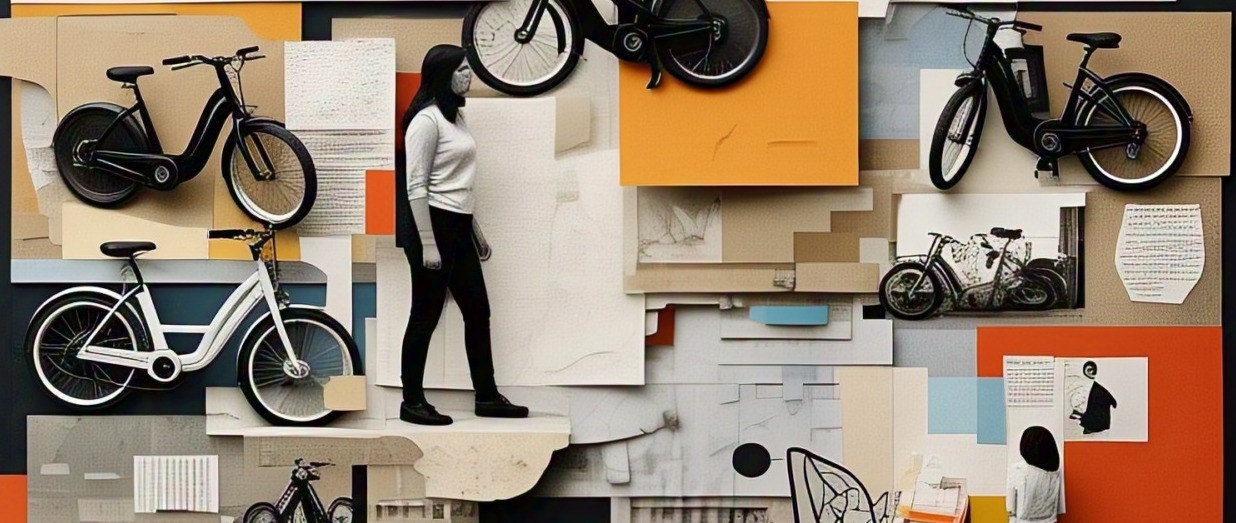
E-Bike Technology Made Simple: Understanding Your Electric Bike
Confused by all the technical jargon? Don't worry – understanding e-bike technology doesn't require an engineering degree. This guide breaks down everything you need to know in simple, everyday language.
🔧 How E-Bike Motors Work (The Simple Version)
Think of an e-bike motor like a helpful friend who gives you a push when you need it. Here's how it actually works:
The Basic Process
- You start pedaling (or press the throttle)
- Sensors detect your effort and tell the motor "help needed!"
- The motor kicks in and adds power to your pedaling
- You feel like you have super legs!
What's Actually Happening Inside
Your motor is basically a powerful electric magnet that spins. When electricity flows through it:
- Magnets inside create a spinning force (called torque)
- This force either spins your wheel directly (hub motor) or helps turn your pedals (mid-drive motor)
- The computer controls how much electricity flows = how much help you get
🔍 Real-World Example: Imagine you're pushing a heavy shopping cart up a hill. A friend comes behind you and starts pushing too. That's exactly what your e-bike motor does – it adds its strength to yours.
Types of Motor Power
| Motor Power | What It Feels Like | Best For |
|---|---|---|
| 250W | Gentle push, like a tailwind | Flat terrain, light riders |
| 500W | Strong assistance, hills feel easy | Most riders, mixed terrain |
| 750W+ | Powerful boost, can climb steep hills | Heavy riders, cargo, steep hills |
🔋 Battery Technology: Lithium vs Everything Else
Your e-bike battery is like the gas tank in your car – it stores the energy that powers your motor. Here's what you need to know:
Why Lithium Batteries Rule
99% of quality e-bikes use lithium batteries. Here's why:
✅ Lithium Batteries
- Lightweight: 6-8 pounds typical
- Long-lasting: 3-5 years of regular use
- Fast charging: 3-6 hours to full
- No memory effect: Can charge anytime
- Consistent power: Same power from 100% to 20%
❌ Lead-Acid Batteries (Avoid These)
- Heavy: 15-25 pounds
- Short life: 1-2 years maximum
- Slow charging: 8-12 hours
- Memory problems: Must fully discharge
- Power drops: Gets weaker as it drains
Types of Lithium Batteries
| Battery Type | Lifespan | Cost | Best Feature |
|---|---|---|---|
| Lithium-Ion (Li-ion) | 500-800 cycles | $$ | Most common, reliable |
| Lithium Phosphate (LiFePO4) | 1000+ cycles | $$$ | Longest lasting, safest |
| Lithium Polymer (LiPo) | 300-500 cycles | $ | Lightweight, custom shapes |
💡 Bottom Line: Stick with lithium-ion or lithium phosphate batteries. If someone tries to sell you a lead-acid e-bike, run away!
⚡ Understanding Wattage, Voltage, and Range
These numbers can seem confusing, but think of them like your car's specs:
Voltage (V) = Your Engine Size
- 36V: Like a 4-cylinder car – efficient but not super powerful
- 48V: Like a V6 – good balance of power and efficiency (most popular)
- 52V+: Like a V8 – maximum power for hills and speed
Simple rule: Higher voltage = more power, but also more expensive
Watt-Hours (Wh) = Your Gas Tank Size
- 400Wh: Small tank – 20-30 miles range
- 500-600Wh: Medium tank – 30-45 miles range
- 700Wh+: Large tank – 45-70+ miles range
Simple rule: More watt-hours = go farther, but heavier and more expensive
How to Calculate Your Real-World Range
Manufacturers often exaggerate range. Here's a realistic formula:
🧮 Range Calculator
Conservative Range = Battery Wh ÷ 20
Optimistic Range = Battery Wh ÷ 10
Example: 500Wh battery
- Conservative: 500 ÷ 20 = 25 miles
- Optimistic: 500 ÷ 10 = 50 miles
- Reality: Probably 30-40 miles for most riders
What Affects Your Range
| Factor | Impact on Range | Why |
|---|---|---|
| Your weight | -20% if heavy | Motor works harder |
| Hills | -30% to -50% | Climbing uses lots of power |
| Wind | -10% to -25% | Fighting air resistance |
| Cold weather | -15% to -25% | Battery chemistry slows down |
| Tire pressure | -10% if low | More rolling resistance |
🚴 Pedal Assist vs Throttle: What's the Difference?
This is one of the most confusing aspects for new riders. Let's clear it up:
Pedal Assist (PAS) - Most Common
How It Works:
- You start pedaling (even just a little bit)
- Sensors detect your pedaling motion
- Motor automatically adds power to help you
- You control the level of help (usually 1-5 or 1-9 levels)
What It Feels Like:
"Like having the wind at your back" or "like pedaling downhill even when going uphill"
Benefits:
- Feels natural and intuitive
- You still get exercise
- Better battery life
- Legal on more bike paths
Throttle Control - Like a Motorcycle
How It Works:
- You twist the throttle or press a button
- Motor provides power immediately
- No pedaling required
- You control speed with throttle position
What It Feels Like:
"Like riding a quiet motorcycle" or "electric scooter with pedals"
Benefits:
- Great for starting from stops
- Helpful if you get tired
- Good for mobility issues
- Instant power when needed
Which System Should You Choose?
| Your Situation | Best Choice | Why |
|---|---|---|
| Want exercise + assistance | Pedal Assist Only | Forces you to pedal, more natural |
| Mobility or knee issues | Throttle + Pedal Assist | Flexibility when you can't pedal |
| Commuting in traffic | Throttle + Pedal Assist | Quick starts at traffic lights |
| Recreational riding | Pedal Assist Only | More engaging, better workout |
| Hills and headwinds | Both Systems | Maximum flexibility |
Understanding Assist Levels
Most e-bikes have 3-9 assist levels. Here's what they typically feel like:
- Level 1 (Eco): Gentle nudge – like having a slight tailwind
- Level 3 (Normal): Noticeable help – hills become manageable
- Level 5 (High): Strong assistance – feels like you're superhuman
- Level 9 (Turbo): Maximum power – mainly for steep hills
🔧 How All These Systems Work Together
Your e-bike is like a team where everyone has a job:
The E-Bike Team
- Battery (The Power Source): Stores electricity like a gas tank
- Motor (The Muscle): Converts electricity into spinning power
- Controller (The Brain): Decides how much power to send to the motor
- Sensors (The Eyes and Ears): Monitor your pedaling and tell the controller what you need
- Display (The Dashboard): Shows you what's happening and lets you control settings
A Typical Ride Scenario
🚴 You start pedaling up a hill...
- Sensors detect: "They're pedaling harder and going slower"
- Controller thinks: "They need more help!"
- Controller tells battery: "Send more power to the motor"
- Motor responds: Spins faster to help you climb
- Display shows: Power level, remaining battery, current speed
- You feel: Like you suddenly got stronger!
🎯 Key Takeaways
Remember These Essentials:
- Motors: More watts = more power, but also more cost and weight
- Batteries: Stick with lithium, more Wh = longer range
- Range: Real world is usually 50-70% of advertised range
- Assist: Pedal assist feels natural, throttle gives instant power
- Voltage: 48V is the sweet spot for most riders
⚠️ Don't Get Overwhelmed
Here's the truth: Most modern e-bikes work great regardless of the technical details. Focus on finding one that:
- Fits your budget
- Has enough range for your typical rides
- Feels comfortable when you test ride it
- Comes from a reputable brand with good support
The technology is there to help you – you don't need to become an expert to enjoy riding!
Ready to put this knowledge to use? Check out our buyer's guide to find the perfect e-bike for your needs, or browse our recommended models that balance all these technical factors perfectly.
.png?width=450&height=250&name=Untitled%20design%20(2).png)

